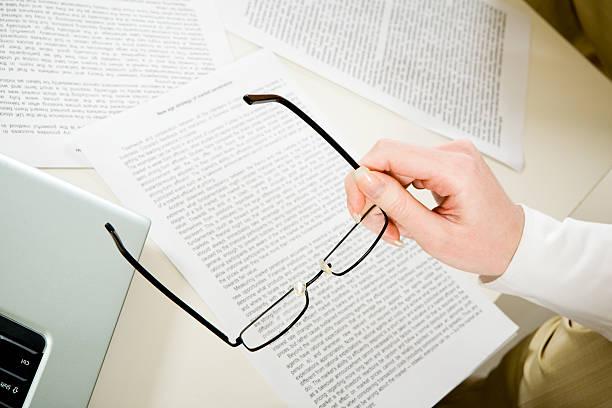A Clearer View: Using a Reading Glasses Strength Chart to Find Your Perfect Fit

As digital devices become integral to our work, communication, and entertainment, more people are recognizing the need for visual clarity during close-up tasks. Presbyopia, a condition that reduces the eye’s ability to focus on nearby objects, affects nearly everyone as they approach middle age. In response, reading glasses have become a convenient and cost-effective solution. But with so many strengths available, how do you choose the right one? That’s where a reading glasses strength chart becomes an essential tool. It helps simplify the process of selecting the right magnification based on your age and needs, offering a balance between clarity and comfort.
How Reading Glasses Work
Reading glasses are designed with convex lenses to magnify close-up text or objects. They assist the eyes in focusing at a short distance, typically around 14 to 16 inches from the face. Unlike prescription glasses that correct for long-distance vision or complex refractive errors, reading glasses are non-prescription and come in standardized magnification levels. These are measured in diopters, ranging from +1.00 to +3.50, increasing in 0.25 increments. Choosing the wrong strength can result in blurred vision or eye strain, which is why the reading glasses strength chart is so widely recommended. It provides a useful baseline, allowing users to identify the best starting point before making a purchase.
What the Reading Glasses Strength Chart Measures
The reading glasses strength chart estimates the lens power needed based on a person's age and typical reading distance. It categorizes users in age ranges and pairs them with suggested strengths. For example, someone aged 40–44 may start with +1.00, while someone in their late 50s might be better suited to +2.25. However, it’s not a one-size-fits-all tool. The chart offers guidance rather than precision. Everyone reads at a different distance, under different lighting, and for varying durations. People with stronger lighting or high-contrast text may find they need less magnification than someone reading fine print in a dimly lit room. Still, the reading glasses strength chart remains one of the easiest tools to start narrowing down the right power.
Real-World Testing and Adjustments
Using a reading glasses strength chart is a smart first step, but trying out a few magnifications is often necessary to find the most comfortable option. Many people test several pairs close to their recommended strength to see which feels the most natural. The goal is to choose the lowest strength that still offers clear reading at your typical distance. Overcorrecting with higher powers may offer a sharp image initially but can cause fatigue or headaches over time. Ideally, reading should feel effortless. You shouldn’t need to hold books or screens farther away or squint to make out letters. If you find that no strength feels right, or if each eye seems to require a different power, it may be time to consult an optometrist for a custom evaluation.
Lifestyle Factors That Influence Lens Strength
While age is the main reference point in a reading glasses strength chart, lifestyle plays a significant role in how that information should be applied. People who work on computers, craft, sew, or read small print for hours each day may need slightly stronger or more specialized lenses. Others who frequently move between reading and looking at mid-range objects may benefit from multifocal or progressive lenses. Environmental elements such as lighting, font size, and screen brightness also impact perceived clarity. What’s comfortable for one person at +1.75 may feel weak for someone else reading in dim lighting. That’s why using the chart as a base, then fine-tuning through trial and personal habits, ensures a better fit.
FAQs
What is a reading glasses strength chart?
It’s a guide that matches age ranges with suggested lens powers, helping users estimate the right magnification for reading or close-up work.
Is the chart accurate for everyone?
The chart gives a helpful baseline, but comfort varies depending on reading habits, lighting conditions, and personal vision differences.
How often should I update my reading strength?
Reading needs typically increase gradually with age. Rechecking your strength every 1–2 years, or whenever you notice eye strain, is a good practice.
Can I use the chart if I wear contacts or prescription glasses?
Yes, especially if you wear contacts for distance vision. You can use reading glasses over your lenses based on the chart’s suggestions.
Should I see an eye doctor before buying reading glasses?
If you’ve never used reading glasses before or notice additional symptoms like double vision or headaches, seeing an eye care professional is strongly advised.
Conclusion
Choosing the correct magnification is essential for getting the most benefit out of your reading glasses. The reading glasses strength chart is a simple, effective tool that offers guidance based on age and helps reduce the risk of picking the wrong power. Still, individual factors like reading habits, lighting, and screen usage all influence your ideal strength. Taking the time to test a few strengths can make all the difference in achieving lasting clarity and comfort. For anyone looking to combine optical precision with modern style, the expert-curated selection from EFE Glasses makes it easy to find the right fit for both your vision and your look.
Author Bio:
Written by Alex Reid, a seasoned eyewear writer and product specialist with deep knowledge of optical fashion and lens selection. Alex frequently contributes content for EFE Glasses, helping readers choose eyewear that suits their vision needs and lifestyle. Visit their site to explore a wide range of stylish, reader-friendly options.
- Art
- Causes
- Crafts
- Dance
- Drinks
- Film
- Fitness
- Food
- Games
- Gardening
- Health
- Home
- Literature
- Music
- Networking
- Other
- Party
- Religion
- Shopping
- Sports
- Theater
- Wellness


